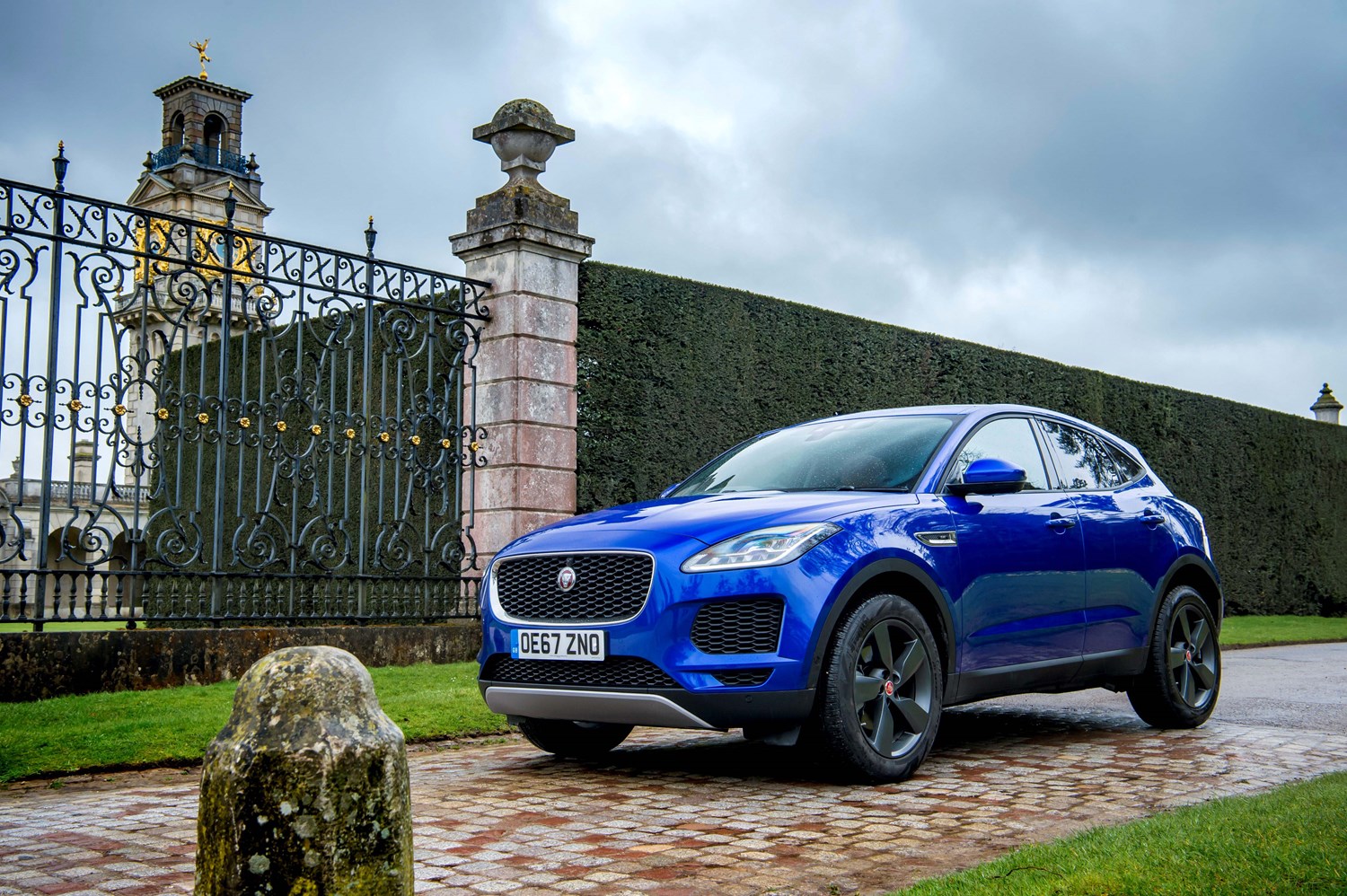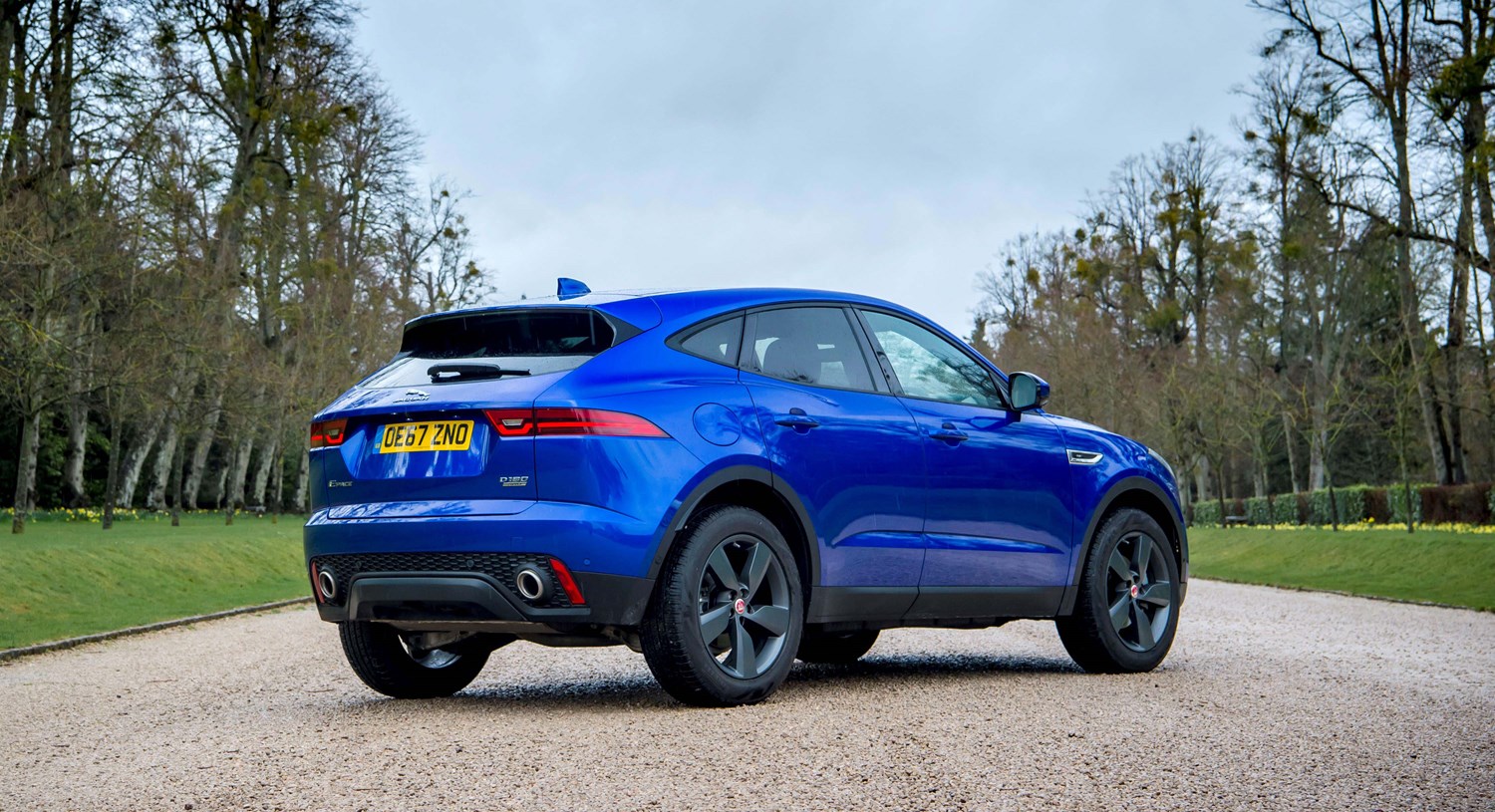Model review
Despite being twinned with 4x4-maker Land Rover, Jaguar was incredibly late to join the SUV party, and well behind the likes of Audi, BMW and Mercedes in the premium car race.
But it finally joined the competitive segment in 2015 with its stunning F-Pace, which was stunning to look at and brilliant to drive. Given how successful it quickly became, it’s not a surprise that Jaguar soon decided to launch a smaller model – the E-Pace.
Rivalling the likes of the Audi Q3 and BMW X1, the E-Pace was unveiled in 2017 as the firm’s first compact SUV – impressing with its stylish looks and tech. The latter includes a large 12.3-inch digital driver display, 4G Wi-Fi hotspot and head-up display. It’s also available in a host of engines – from small diesels to 296bhp petrol engines that allow the E-Pace to sprint to 60mph in less than six seconds.
Latest model
Given the E-Pace is still a relatively new model, it’s yet to receive any kind of major update or facelift – even though the majority of its rivals have moved on significantly since.
That said, Jaguar has made some slight tweaks to the E-Pace, including the addition of an adaptive suspension setup, artificial intelligence (AI) technology and also an entry-level 197bhp 2.0-litre petrol engine.
In 2019 Jaguar also introduced a ‘Chequered Flag’ special edition, which brought with it exclusive colours, red styling details and other minor design tweaks. At the same time, the firm also introduced Apple CarPlay and Android Auto smartphone mirroring.
Since the E-Pace’s introduction in 2017, it’s gone on to become Jaguar’s most popular car – unsurprising given it's in the lucrative small SUV market and is also the British manufacturer’s most affordable car.
Value for money
Despite this, it’s not what you’d call cheap. With prices starting from £30,490, it’s more expensive than the BMW X1 and Volvo XC40, though more affordable than the Audi Q3 and Range Rover Evoque. Low- and mid-spec models make the most financial sense, as range-topping models are far too expensive – costing nearly £50,000 even before options, which is a huge amount of money for a small SUV.
But it’s worth having a look at the used market, with used E-Paces available from as little as £21,000 for a two-year-old low-spec car. It’s worth increasing your budget for a mid-spec model, though. Expect to save up to £5,000 on a nearly-new car, too – making the E-Pace a very compelling used car option.
Looks and image
Styling is a big part of the ‘premium’ image surrounding brands like Jaguar, and despite the E-Pace being the entry-level model to this brand, this car doesn’t disappoint on the looks front. It successfully adopts cues from the F-Type sports car and larger F-Pace and wraps it up in a chunky SUV that’s undoubtedly one of the best-looking cars in this class. You can also choose the E-Pace with or without an R-Dynamic’ package, which brings sportier looks and replaces the cheap-looking black plastic trim with body-coloured painted surfaces instead.
Behind the wheel the E-Pace also impresses, being really sharp to drive for a small SUV – helped by a range of powerful petrol and diesel engines. The steering is weighty and it’s certainly more enjoyable to pilot than its Range Rover Evoque sibling, and is comfortable as well. It’s not the lightest of models, though, and you can certainly feel the extra weight through the corners.
Up against rivals from BMW, Audi and Mercedes, the E-Pace’s interior is just starting to feel a bit dated. While the material quality is excellent and it certainly feels upmarket, the actual design isn’t the most modern, while the infotainment system is one of the weakest links – not being as easy to use and clear as rivals’ systems.
Space and practicality
One area where the E-Pace really impresses, though, is on the spaciousness front. As a small SUV, you might not expect it to be especially roomy, but that’s far from the case and this is a very capable family car.
With the rear seats upright, the E-Pace’s 577-litre boot eclipses that of its rivals, though with the seats folded, the 1,234 litres isn’t the largest available – it’s beaten quite noticeably by the 1,550 litres in a BMW X1, which is worth considering if space is the more important.
The space in the cabin itself is also generous, with adults treated to plenty of room in the back, even if a panoramic glass roof is fitted too. There’s plenty of storage room as well, which adds to the E-Pace’s credibility as a family car, as does its five-star Euro NCAP safety rating.
Engines
While Jaguar is yet to introduce a hybrid derivative of its E-Pace, unlike rivals like the BMW X1 and Volvo XC40, there’s a great choice of petrol and diesel engines available.
Starting with diesel engines, there are three 2.0-litre units available. The entry-level option is the D150, which produces 148bhp. This engine is the only E-Pace you can choose with front-wheel-drive – all other models feature all-wheel-drive – and you have the option of a six-speed manual gearbox or nine-speed automatic transmission.
While the D150 is the most efficient E-Pace engine available, it’s worth upgrading to the D180 with 177bhp for the extra punch, and you also still have a manual or automatic gearbox option. At the top of the diesel range is the automatic D240, which produces 237bhp, can sprint to 60mph in a credible 6.6 seconds and reach a top speed of 139mph.
Moving over to the petrol side, all versions feature a 2.0-litre unit with all-wheel-drive. The choices include the 197bhp P200, 247bhp P250 and the 296bhp P300. Even the P200 delivers great performance – sprinting to 60mph in 7.5 seconds and reaching a top speed of 134bhp – but if you want the quickest E-Pace, the P300 is the one to go for. This can reach 60mph in 5.9 seconds and hit a top speed of 149mph.
Running costs
If you’re wanting to keep a watch on running costs, you should undoubtedly choose a diesel engine for the E-Pace. Though neither are especially efficient, the D150 is the one to go for with front-wheel-drive and a manual gearbox. It’ll return a claimed 42.7mpg, with CO2 emissions of 143g/km. The D240 returns similar fuel economy figures of 37.1mpg, but CO2 emissions are much higher at 175g/km.
If you do a lot of miles each year, the petrol options are worth avoiding, as even with the P200 engine, the E-Pace barely achieves a claimed 30mpg, with CO2 emissions of 182g/km.
It’s also worth looking out for an E-Pace that has or had a list price of less than £40,000 when new, as those exceeding that figure will pay an extra £310 in annual road tax for the five years after the first registration.
Things to look out for
The E-Pace is still a new model and until at least the end of 2020 all will be covered under the manufacturer’s warranty. While there’s still a question mark over this SUV’s reliability, the firm hasn’t always been known for its cars’ dependability, and repairs are likely to be expensive should anything need changing or repairing. We’d recommend looking into an aftermarket warranty once the three-year Jaguar cover runs out for extra peace of mind.
Rivals
The premium SUV class is filled with some great options, with the BMW X1, Audi Q3 and Volvo XC40 being three great options, and cars we’d recommend looking at as well. You could also look at the mechanically-similar Range Rover Evoque, BMW X2 and Mercedes GLA, while the hybrid Lexus UX is an interesting alternative, though it’s not very roomy.
Depreciation
Despite the premium badging, the E-Pace is Jaguar’s most popular car and this hits depreciation – meaning it doesn’t quite hold its value as well as other models from the firm. However, that makes this SUV a great nearly-new buy, as you can expect to save at least several thousand pounds on a model less than a year old.




